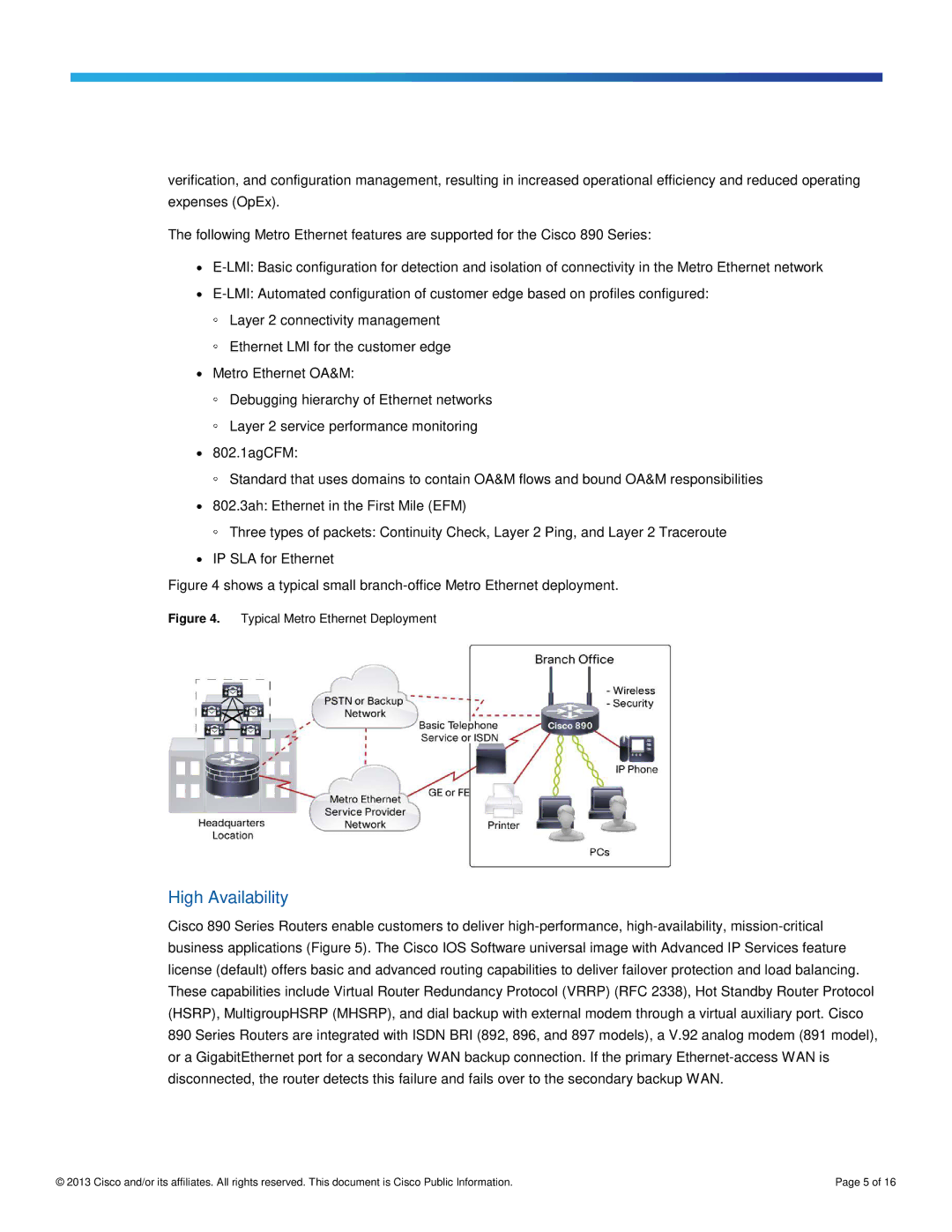
verification, and configuration management, resulting in increased operational efficiency and reduced operating expenses (OpEx).
The following Metro Ethernet features are supported for the Cisco 890 Series:
●
●
Layer 2 connectivity management
Ethernet LMI for the customer edge
●Metro Ethernet OA&M:
Debugging hierarchy of Ethernet networks
Layer 2 service performance monitoring
●802.1agCFM:
Standard that uses domains to contain OA&M flows and bound OA&M responsibilities
● ◦802.3ah: Ethernet in the First Mile (EFM)
Three types of packets: Continuity Check, Layer 2 Ping, and Layer 2 Traceroute
●IP SLA for Ethernet
Figure 4 shows a typical small branch-office Metro Ethernet deployment.
Figure 4. Typical Metro Ethernet Deployment
High Availability
Cisco 890 Series Routers enable customers to deliver
© 2013 Cisco and/or its affiliates. All rights reserved. This document is Cisco Public Information. | Page 5 of 16 |
